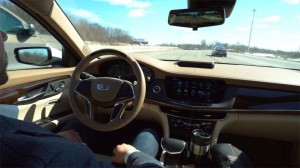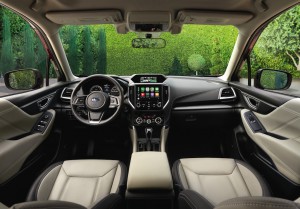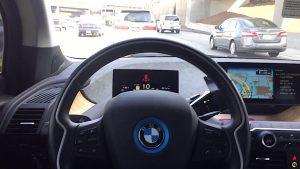
Drivers report a level of uncertainty about the use and effectiveness of driver monitoring systems, such as Cadillac’s Super Cruise.
New technology is creeping into cars, but motorists remain ambivalent about its presence.
Now a new study from Autolist.com shows that consumers’ attitudes towards driver monitoring system, or DMS, which can prevent a driver from nodding off while behind the wheel, are mixed.
Autolist.com surveyed 1,272 current car shoppers in July 2019, to gauge consumer awareness of Advanced Driver-Assistance Systems, DMS and other safety systems.
The survey found that 46% of consumers believed a DMS should be required by law in vehicles; 35% said it should not be required and 19% were unsure. Currently, there is no state or federal law in the U.S. requiring such a system.
Fifty-seven percent of respondents thought a DMS made the vehicle safer on the road for other vehicles while just 53% of people thought a vehicle with a DMS was itself safer. But consumers’ inclination towards making such systems legal was more for the safety of the other vehicles on the road rather than to increase the safety of the vehicle with the system, the Autolist’s survey found.
(Most Drivers Don’t Know How to Use Latest Safety Tech)
This difference could be attributed to the relatively low number of vehicles on the road with any form of DMS. With the average age of cars and light trucks in the U.S. recently hitting nearly 12 years old according to IHS Markit, many consumers remain unfamiliar with the technology.

The new Subaru Forester features DriverFocus, a set of technologies designed to reduce distracted driving.
“We’re still in the early days of Driver Monitoring Systems so many consumers aren’t thinking of them as something they’re interacting with frequently yet,” said Chase Disher, analyst at Autolist. “Instead, they view a DMS as something that will impact them when others are using it around them.”
Autolist also found that consumers were skeptical of the impact a DMS has on driver behavior. Age also played a role in how a consumer felt about a DMS.
The younger the driver, the more likely they were to say a DMS made a vehicle safer — both for its occupants and other drivers on the road, Autolist found.
(Cadillac Expanding Coverage of Hands-Free Coverage)
Younger respondents were also more likely to trust passive DMS rather than active systems. For example, 68% of people 18 to 23 years old said a passive system was most effective whereas 51% of people 66 to 75 years old chose passive.
Passive systems are the most common and they gauge driver attentiveness based on steering wheel torque (most common) or capacitive touch with the steering wheel. They’re often bundled into a group of safety-oriented driver assistance features.
Active driver monitoring systems are only available on a small number of vehicles right now; these camera-based systems use either optical or infrared cameras to monitor the driver’s attention and for driver fatigue.
Shoppers in Autolist’s survey indicated they were reluctant to pay much for these DMS technologies. Two-thirds of respondents (66%) said they would not pay more than $500 for such a feature on their next vehicle.
(Drivers Warming to Arrival of Autonomous Vehicles)
Subaru’s DriverFocus system is included on the top Touring trim of its Forester, which sells for $35,270.
Cadillac’s SuperCruise semi-autonomous package is a $6,000 upgrade on the two lower trims of the CT6; it’s included in the $88,000 Platinum trim. BMW’s system requires either $1,700 or $2,850 worth of package upgrades to its current X5, depending on the engine choice.

